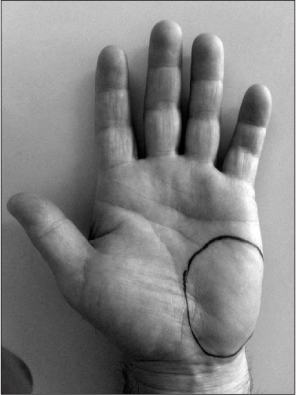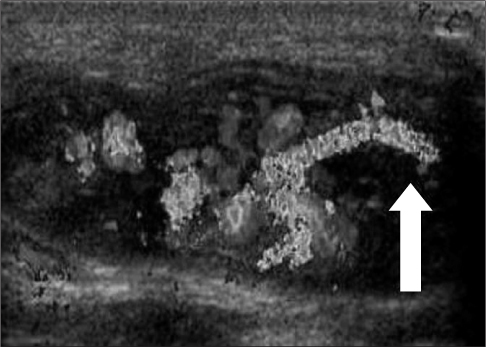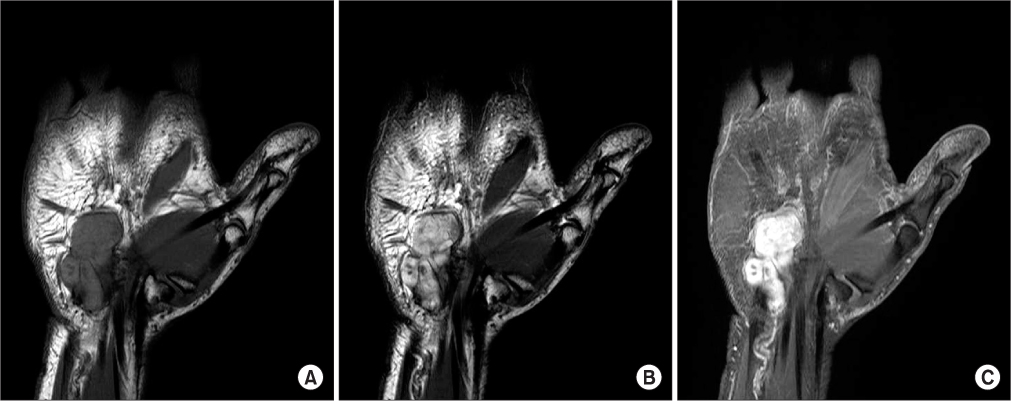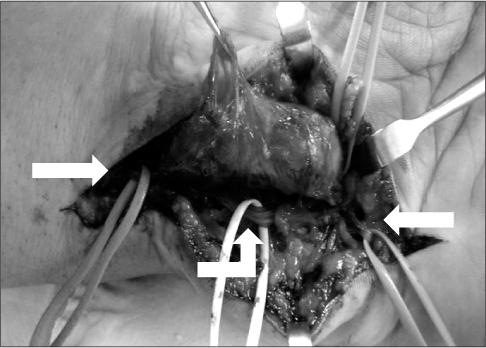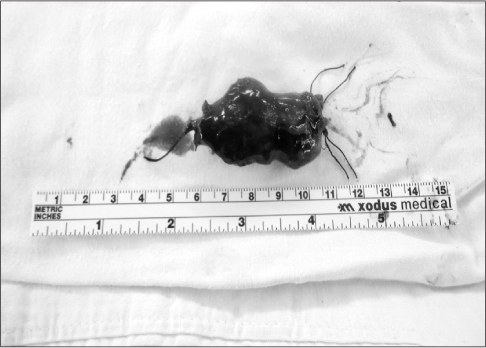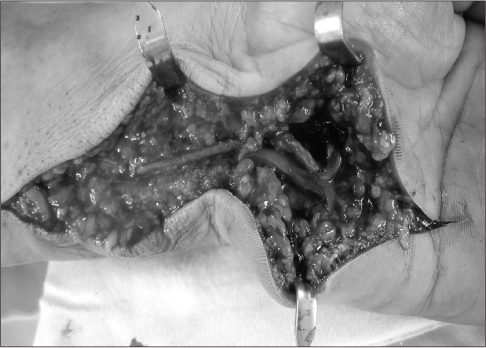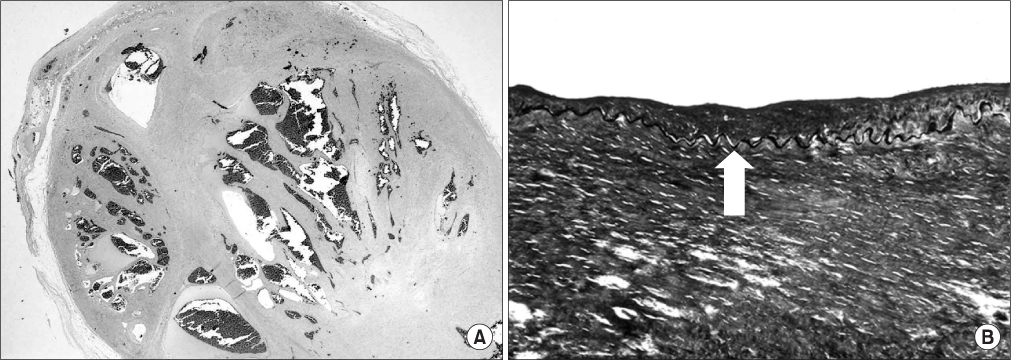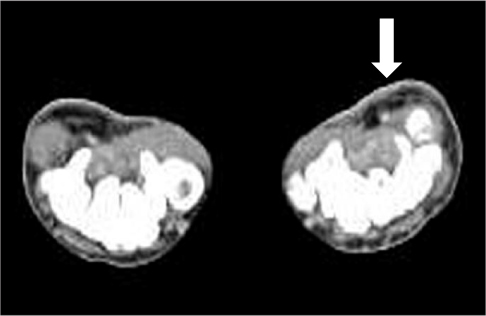J Korean Orthop Assoc.
2013 Apr;48(2):118-123. 10.4055/jkoa.2013.48.2.118.
Posttraumatic Arteriovenous Hemangioma of the Hypothenar Eminence in a Car Mechanic
- Affiliations
-
- 1Department of Orthopedic Surgery, College of Medicine, Jeju National University, Jeju, Korea. cbnuoskbs@jejunu.ac.kr
- KMID: 1424100
- DOI: http://doi.org/10.4055/jkoa.2013.48.2.118
Abstract
- Arteriovenous hemangiomas are found mainly in the limbs and scalp, and are common in women and children. However, there have been very limited reports concerning posttraumatic arteriovenous hemangioma, and none was reported in the medical literature regarding posttraumatic arteriovenous hemangioma of hypothenar eminence causing neurologic symptoms. We report a case of arteriovenous hemangioma of hypothenar eminence after recurrent trauma that was successfully treated by an excision of the mass and vein graft.
Figure
Reference
-
1. Nazzi V, Messina G, Dones I, Ferroli P, Broggi G. Surgical removal of intramuscular arteriovenous hemangioma of the upper left forearm compressing radial nerve branches. J Neurosurg. 2008. 108:808–811.
Article2. Pulidori M, Capuano C, Mouchaty H, Cioffi F, Di Lorenzo N. Intramuscular thrombosed arteriovenous hemangioma of the upper right arm mimicking a neuroma of the ulnar nerve: case report. Neurosurgery. 2004. 54:770–771.
Article3. Acharya G, Merritt WH, Theogaraj SD. Hemangioendotheliomas of the hand: case reports. J Hand Surg Am. 1980. 5:181–182.
Article4. Enzinger FM, Weiss SW. Soft tissue tumors. 2001. 4th ed. St Louis: Mosby;837–887.5. Legiehn GM, Heran MK. Venous malformations: classification, development, diagnosis, and interventional radiologic management. Radiol Clin North Am. 2008. 46:545–597.
Article6. Allen PW, Enzinger FM. Hemangioma of skeletal muscle. An analysis of 89 cases. Cancer. 1972. 29:8–22.7. Cohen JM, Weinreb JC, Redman HC. Arteriovenous malformations of the extremities: MR imaging. Radiology. 1986. 158:475–479.
Article8. Perumal V, Francisco CJ. Arteriovenous hemangioma of the foot--a case report. Foot Ankle Surg. 2010. 16:e61–e62.
Article9. Pollard MA. Vascular tumors of the hand: a report of 3 cases. Hosp Physician. 2003. 3:57–61.10. Hiroyasu N, Yukio S, Masayoshi U, Masahide I, Mitsunori O, Ryoji U. A case with arteriovenous hemangioma that occurred in the finger. Okinawa Med J. 2003. 41:62–64.

